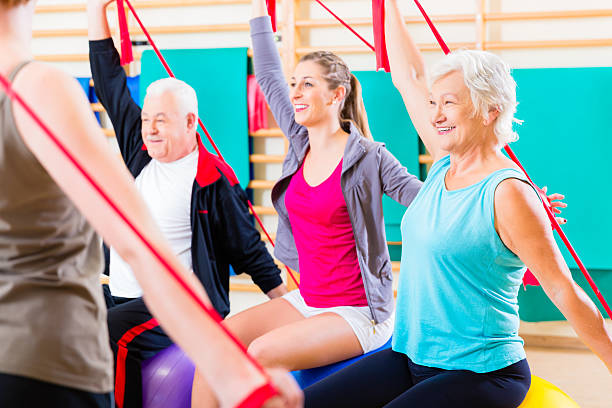Flexibility refers to the range of motion around a joint or a group of joints. Beyond its role in physical movements, flexibility is a vital component of overall fitness and well-being. Embracing flexibility offers a plethora of benefits, making it an essential aspect of a well-rounded fitness routine. Here are the benefits of having a flexible body:
Enhanced Athletic Performance
In the realm of sports and athletics, flexibility can be a game-changer. Improved range of motion in joints and muscles allows athletes to move more efficiently and effectively. Whether you’re a runner with more extended strides, a gymnast with greater maneuverability, or a martial artist with enhanced kicking power, flexibility can elevate your athletic performance to new heights.
Improved Posture and Alignment
A supple and flexible body promotes better posture and alignment. Tight muscles can lead to poor posture, causing imbalances that may result in discomfort and pain. Flexibility training helps lengthen muscles, alleviating tension and allowing the body to maintain proper alignment, reducing the risk of postural issues.
Reduced Risk of Injuries
Flexible muscles and tendons are less prone to strain and injuries. When muscles are supple and elastic, they can better absorb impact and handle sudden movements without overstretching or tearing. Incorporating flexibility exercises into your routine can serve as a protective shield against common fitness-related injuries.
Eased Muscle Tension and Stress Relief
Tight and tense muscles can be a source of physical and mental stress. Engaging in regular flexibility training, such as yoga or stretching, promotes muscle relaxation and reduces stress levels. The meditative aspects of flexibility practices can also contribute to a calmer and more centered mind.
Increased Range of Motion and Functionality
Flexibility training enhances the range of motion in your joints, improving your overall functionality. Everyday tasks like bending, reaching, and twisting become more accessible and effortless, adding to your overall quality of life.
Better Circulation and Blood Flow
Dynamic stretching and flexibility exercises increase blood flow to the muscles, improving circulation and nutrient delivery. This enhanced blood flow aids in muscle recovery after workouts, reducing muscle soreness and promoting faster healing.
Enhanced Body Awareness and Mind-Body Connection
Flexibility practices, such as yoga and Pilates, foster a deeper mind-body connection. As you become more attuned to your body during stretches and poses, you gain increased body awareness. This heightened awareness can extend beyond your fitness routine and lead to better self-care practices.
Complement to Strength Training
Flexibility and strength go hand in hand. While strength training builds muscle power, flexibility training ensures that these muscles remain limber and flexible, preventing muscle tightness that could hinder mobility and strength gains.
Age-Defying Benefits
Maintaining flexibility as you age can lead to age-defying benefits. It keeps your joints lubricated, muscles pliable, and helps counteract the natural loss of flexibility that comes with aging. Staying flexible can contribute to maintaining an active and independent lifestyle as you grow older.
Tips on How You Can Become More Flexible
1. Dynamic Warm-Up
Begin your exercise routine with a dynamic warm-up that includes dynamic stretching exercises. Dynamic stretching involves controlled movements that take your joints through their full range of motion. This helps increase blood flow to the muscles and prepares your body for the workout ahead.
2. Incorporate Static Stretching
After your workout or physical activity, include static stretching exercises. Hold each stretch for about 15-30 seconds, focusing on major muscle groups like hamstrings, quadriceps, calves, chest, shoulders, and back. Static stretching helps improve flexibility and aids in muscle recovery.
3. Practice Yoga or Pilates
Yoga and Pilates are excellent disciplines for improving flexibility and promoting better body awareness. Both practices emphasize stretching, balance, and core strength, helping you achieve better flexibility and prevent injuries.
4. Foam Rolling and Self-Myofascial Release
Incorporate foam rolling or self-myofascial release techniques into your routine. These methods involve using a foam roller or other tools to apply pressure to tight or sore muscles, releasing tension and improving flexibility.
5. Gradual Progression
Be patient and gradually progress in your flexibility training. Avoid pushing yourself too hard too soon, as this may lead to injuries. Aim to gently push your boundaries while maintaining proper form and alignment.
6. Balance Strength and Flexibility
Remember that flexibility should be balanced with strength. Focus on strength training exercises that engage your muscles through their full range of motion, as this can complement and enhance your flexibility. It may be a good idea to get a gym membership in places like BodyPlex or American Family Fitness which have complete strength training equipment.
7. Listen to Your Body
Pay attention to your body’s signals during stretching and exercise. Never force a stretch or push beyond your limits. Respect your body’s current abilities and progress at a pace that feels comfortable and safe.
8. Rest and Recovery
Give your body ample time to rest and recover between workouts. Adequate rest allows your muscles and connective tissues to repair and adapt, reducing the risk of overuse injuries.
9. Stay Hydrated
Proper hydration is essential for overall health and flexibility. Drink enough water throughout the day to keep your muscles and connective tissues supple and pliable.
Flexibility exercises for seniors:
